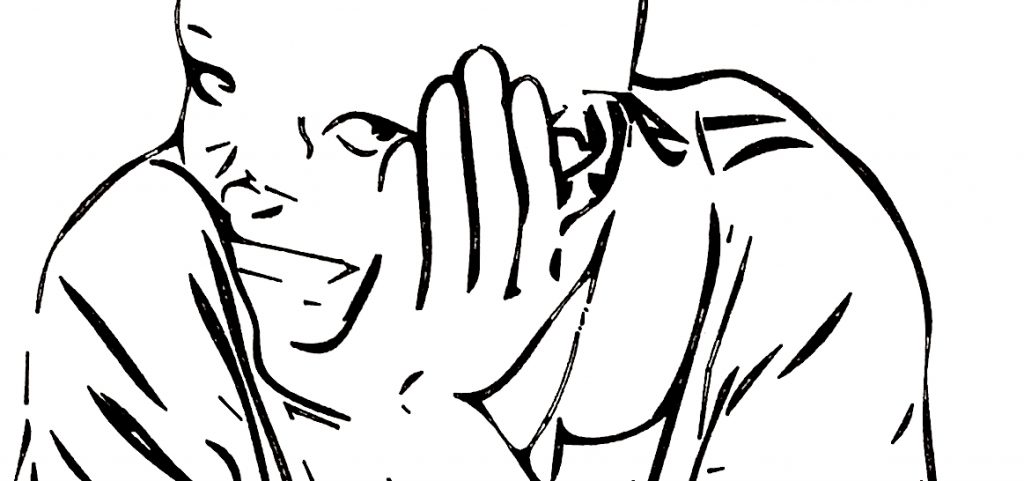In advance of Dr Kathy Dodworth’s talk at LSE on 23 May 2023 on her new book, Legitimation as Political Practice, German artist Christian Hotz and Kathy Dodworth, Research Fellow at the Centre of African Studies at the University of Edinburgh, write about the meanings behind the cover art. (You can read the Introduction of the book for free during May 2023).
Some academic books have in the past drawn on single images or stock photographs for covers, which in some cases proved reductionist for complex themes. Recently, abstract images are more commonplace, which are bold and eye-catching.
For our book cover for ‘Legitimation as Political Practice’, we tried something different.
The book is about everyday legitimation, whereby political actors – in this case non-governmental organizations (NGOs) – use informal practices to craft their authority in lieu of formal legitimacy. Practices are dynamic, performative and, crucially, negotiated between actors and their audience. This is what we were trying to capture.
We needed to tread carefully, given long-standing, problematic and essentializing representations of Africa: aesthetically and politically. Our approach was two-fold: first we used photographs taken by NGOs themselves (with correct permissions and creatively-protected identities), exploring NGOs’ own representations of their work. Second, we made a young woman our main protagonist, who is staring straight back at the observer.
The book explores five practices in particular: territoriality; the state; voluntarism; representation; and materiality (in this case of data). When it came to the design of the cover for this book, we wanted something that would capture the interplay and complexities involved in these practices, in this case within coastal Tanzania.
The creation of political space, or territory, is a recurring theme. Off-centre is an NGO officer, engaging with a village audience for the first time. We used overlays of multiple arm positions from real photos to capture his animated, dynamic performance.
He was making strong representative claims that day, drawing a line around his new constituency. But he is also straddling two worlds, which his urban dress and Landcruiser hint at. He himself joked at his air of urbanity after the event.
Some interpreted his depiction as shadowy and sinister, echoing once-dominant critiques of the African ‘big man’. This was not our intention: he was likeable and worked skilfully to minimise disparities and maximise connection with his audience. We made him monochrome to bring the woman to the fore.
Creating spaces was central to the artistic process also. We avoided overloading the cover, balancing the thematic contents with maintaining a visual flow. In this, we kept the elements themselves flat, layering them to create spaces and visual tension. This was achieved most prominently through the tree backdrop, which pulls forward from behind the village audience and Landcruiser, to provide shade for our two main characters.
Space, constituency, representation and voluntarism are also explored through the most important, upper layer of the artwork. This layer is an ink and aquarelle drawing of the young woman, resting in front of a cracked adobe wall, separate to the scene behind her and gazing back as if challenging the place of the onlooker.
Her expression is a powerful concoction of openness and patience, fatigue and skepticism.
Incorporated in the pattern of her kitenge wrap is the Swahili ‘Majukumu’, meaning responsibilities. This formed part of her story explored in the book, whereby her assigned voluntary work interfered with her other duties, these opportunity costs keenly felt.
Above all, the book is about the audience: the ‘always assumed, never seen’ legitimation subject. While we blurred them to bring others to the fore, they are present: interpreting, negotiating and contesting legitimation.
The viewer can discern the variation in audience interest and the social hierarchies within.
The cover was the result of a long dialogical process between us: Kathy learning the possibilities of multimedia art to explore complex themes, Chris learning the pitfalls of working to represent Others. We went through 36 sets of revisions, with components test-driven (with various audiences and research participants) and some abandoned.
We also reflected on our own practices of self-legitimation as artist or as researcher as we negotiated with each other, our various audiences and, most importantly, with the broader ethics and politics of artistic representation.
Kathy will be giving a talk about her book on 23 May 2023 at 6.30pm in the Wolfson Theatre, New Academic Building, LSE. Find out more.
Prints and new abstracts by Chris will be on display at the event and are available to buy. Proceeds will go to community-based organizations where the research took place.
You can read the Introduction of the book for free during May 2023.





